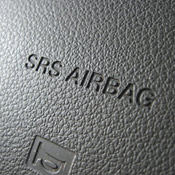9 Top Ways to Slash Car Insurance Costs in Logan, UT

Have you fallen victim to an overpriced car insurance policy? Trust us, you’re not alone.
Drivers have multiple insurers to pick from, and even though it’s nice to have a choice, too many choices makes it more difficult to compare rates.
This article will let you in on how to effectively get price quotes. If you currently have car insurance, you should be able to lower your premiums substantially using these techniques. But Utah car owners must comprehend how insurance companies sell insurance online.
How to Compare Logan Car Insurance Costs
Most companies like 21st Century, Allstate and State Farm quote coverage price quotes online. Getting quotes is fairly straightforward as you simply enter the amount of coverage you want into a form. After you submit the form their system will obtain your driving record and credit report and returns pricing information based on many factors. Online quotes streamlines rate comparisons, but having to visit a lot of sites and enter the same data into a form is not the best way to spend an afternoon. But it’s absolutely necessary to do this if you want to find a better rate.
A quicker way to find cheaper rates uses one form that gets price quotes from more than one company. It saves time, requires less work, and makes online price comparison much more enjoyable and efficient. After your information is entered, it gets priced and you can select any or none of the quotes that you receive.
If you find a better price you can simply submit the application and purchase coverage. It takes 15 minutes at the most and you’ll know if lower rates are available.
If you want to compare pricing, click here to open in new window and submit your coverage information. If you have your current policy handy, we recommend you duplicate the insurance coverages exactly as they are listed on your policy. Doing this guarantees you will have a price comparison for exact coverage.
Buyer beware of car insurance advertising tricks
Companies like 21st Century, Allstate and State Farm continually stream ads on TV and radio. All the ads make an identical promise that you’ll save big after switching your coverage to them. But how can every company make almost identical claims?
All companies can use profiling for the type of driver that is profitable for them. For example, a preferred risk might be profiled as over the age of 40, has no tickets, and has great credit. Any driver who matches those parameters will qualify for the lowest rates and as a result will probably pay quite a bit less when switching companies.
Drivers who don’t measure up to the requirements will have to pay a more expensive rate which usually ends up with business going elsewhere. The ads state “customers who switch” not “everybody who quotes” save that kind of money. That’s the way companies can claim big savings.
Because of the profiling, it’s extremely important to quote coverage with many companies. Because you never know the company that will have the lowest rates.
Take these nine discounts and save
Car insurance is not cheap, but you can get discounts that you may not know about. Larger premium reductions will be automatically applied when you get a quote, but some must be specifically requested prior to receiving the credit.
- Service Members Pay Less – Having a family member in the military could be rewarded with lower premiums.
- Accident Waiver – Some insurance companies allow you one accident before hitting you with a surcharge so long as you haven’t had any claims prior to the accident.
- Pay Now and Pay Less – By paying your policy upfront rather than paying monthly you may reduce your total bill.
- Senior Discount – If you’re over the age of 55, you may qualify for a discount up to 10%.
- Organization Discounts – Being a member of a civic or occupational organization is a good way to get lower rates when shopping for car insurance.
- Anti-lock Brakes – Anti-lock brake equipped vehicles are safer to drive and will save you 10% or more.
- Paperwork-free – Some insurance companies will give a small break for buying a policy and signing up on their website.
- Resident Student – Any of your kids who are attending college and do not have a car can be insured at a reduced rate.
- Life Insurance – Companies who offer life insurance give better rates if you take out life insurance from them.
It’s important to understand that some of the credits will not apply to all coverage premiums. Most only apply to specific coverage prices like liability, collision or medical payments. Even though it may seem like having all the discounts means you get insurance for free, you won’t be that lucky. But any discount will reduce your premiums.
To choose companies with discount car insurance rates in Logan, click this link.
Which policy gives me the best coverage?
When buying the best car insurance coverage, there really is no one size fits all plan. Every insured’s situation is different so this has to be addressed. For instance, these questions may help you determine if your insurance needs may require specific advice.
- Should I have combined single limit or split liability limits?
- Am I covered if I crash into my own garage door?
- Do I have coverage if my license is suspended?
- Do I need PIP coverage since I have good health insurance?
- What should my uninsured motorist coverage limits be in Utah?
- Is my nanny covered when driving my vehicle?
If it’s difficult to answer those questions but you know they apply to you, you might consider talking to a licensed insurance agent. If you don’t have a local agent, simply complete this short form or you can go here for a list of companies in your area.
Car insurance 101
Having a good grasp of your policy can be of help when determining appropriate coverage and proper limits and deductibles. The coverage terms in a policy can be ambiguous and coverage can change by endorsement. Shown next are typical coverage types found on most car insurance policies.
Medical expense coverage
Personal Injury Protection (PIP) and medical payments coverage kick in for short-term medical expenses like doctor visits, nursing services, funeral costs and chiropractic care. They are used to fill the gap from your health insurance policy or if you lack health insurance entirely. They cover not only the driver but also the vehicle occupants as well as being hit by a car walking across the street. PIP coverage is not available in all states but it provides additional coverages not offered by medical payments coverage
Uninsured or underinsured coverage
This coverage protects you and your vehicle’s occupants from other drivers when they do not carry enough liability coverage. Covered losses include hospital bills for your injuries as well as damage to your vehicle.
Since a lot of drivers only carry the minimum required liability limits (Utah limits are 25/65/15), it doesn’t take a major accident to exceed their coverage limits. This is the reason having UM/UIM coverage is very important. Normally the UM/UIM limits are set the same as your liablity limits.
Comprehensive protection
Comprehensive insurance coverage pays for damage OTHER than collision with another vehicle or object. You first have to pay a deductible then your comprehensive coverage will pay.
Comprehensive coverage protects against claims like theft, falling objects, a broken windshield, rock chips in glass and hitting a bird. The most you can receive from a comprehensive claim is the cash value of the vehicle, so if the vehicle’s value is low consider removing comprehensive coverage.
Collision coverage
Collision insurance pays to fix your vehicle from damage caused by collision with a stationary object or other vehicle. You first must pay a deductible then the remaining damage will be paid by your insurance company.
Collision coverage pays for claims like damaging your car on a curb, rolling your car, driving through your garage door and hitting a mailbox. Paying for collision coverage can be pricey, so you might think about dropping it from vehicles that are 8 years or older. Another option is to choose a higher deductible to get cheaper collision coverage.
Liability car insurance
Liability insurance protects you from injuries or damage you cause to other’s property or people that is your fault. It protects you from legal claims by others, and doesn’t cover damage to your own property or vehicle.
Coverage consists of three different limits, bodily injury per person, bodily injury per accident and property damage. You commonly see limits of 25/50/25 which stand for $25,000 in coverage for each person’s injuries, $50,000 for the entire accident, and property damage coverage for $25,000. Alternatively, you may have one limit called combined single limit (CSL) which combines the three limits into one amount without having the split limit caps.
Liability coverage pays for claims such as pain and suffering, attorney fees and court costs. The amount of liability coverage you purchase is a decision to put some thought into, but consider buying as high a limit as you can afford. Utah state law requires minimum liability limits of 25,000/65,000/15,000 but it’s recommended drivers buy better liability coverage.
Online plus local equals savings
As you shop your coverage around, you should never skimp on critical coverages to save a buck or two. In many instances, consumers will sacrifice uninsured motorist or liability limits and discovered at claim time that the few dollars in savings costed them thousands. Your goal should be to buy the best coverage you can find at an affordable rate, not the least amount of coverage.
In this article, we covered a lot of ways to shop for car insurance online. The key thing to remember is the more rate quotes you have, the more likely it is that you will get a better rate. You may even find the biggest savings come from the smaller companies. Regional companies can often insure niche markets at a lower cost than their larger competitors like Allstate, GEICO and Progressive.
Much more information about car insurance in Utah is available on the website for the Utah Insurance Department found here. Utah drivers can find out which companies have the most complaints, read consumer alerts, and find disaster information.


